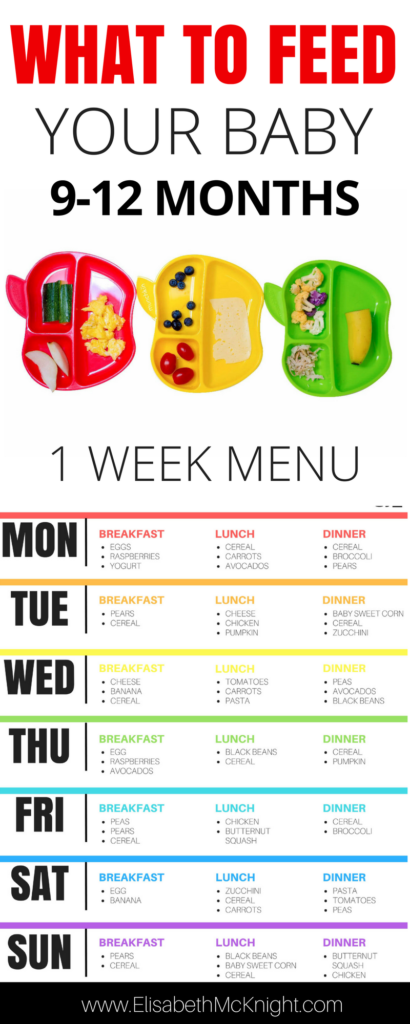4Mth baby food
Top 10 Ideas For 4 Month Baby Food
Some fruits and boiled vegetables may be given to your baby to fulfill their needs.
Image : Shutterstock
Finding suitable food ideas for your four months old baby may be confusing as this is probably the first time they are being introduced to solid food.
As babies turn four months, they become more active and playful. In addition, they start to exhibit more interest in their surroundings. Their stomachs also grow bigger and are ready for more food. Moreover, they seem less interested in milk and are ready to explore new food varieties.
If you recognize these signs in your baby, it is an indication that they have reached the developmental milestone where you may introduce them to solid foods.
Read the post to find whether your baby is ready for solids and to discover some interesting food ideas for them.
Is Your Baby Ready For Solids?
Your baby must have lost the ‘tongue thrust reflex’ by the time they are four months of age. Thrust reflex prevents the infants from choking. It also causes them to push the food out of their mouths. The World Health Organization recommends that we start solids at six months but solids may be introduced at four months. If your baby seems unsatisfied after milk feeds, can hold their head up without any support, can sit without support, wakes up more frequently at night to feed, follows your food with their eyes when you eat, then probably it is the time to introduce him to solid foods. See if your baby is interested in the food or not. If your child stares and grabs your food at dinnertime, then he is ready for some variety. The baby should be able to sit well without any support. Your child needs good neck control to eat solid foods. It will enable him to swallow his food efficiently. The 4 months baby food should consist of solids.
According to Marissa Beck, MS, registered dietitian nutritionist and the founder of REVV Health, “Optimal timing is about signs of readiness over chronological age. The signs to look for are that your baby can sit with minimal support (not slouching) so that safe chewing and swallowing can occur.”
The signs to look for are that your baby can sit with minimal support (not slouching) so that safe chewing and swallowing can occur.”
Quick fact
The ability to pick up things between the finger and the thumb is one of the signs of readiness to eat solids (3).
Related: How To Teach A Baby To Chew And Swallow Their Food?
Top 10 Ideas
Here are the top 10 ideas for a 4-month-old baby as they begin their journey into solid foods.
1. Baby Cereal:
Baby cereal is the most recommended first food for infants. Prepare the cereal with formula or breast milk. It will give the cereal a texture and taste that he is already familiar with. Cereal is also one of the least allergenic foods, making it suitable for babies of 4 months. Give gluten-free cereal, particularly if you have a family history of Celiac diseases or allergies. Wheat, barley, and rye cereal may be unsuitable for babies as they contain gluten. Rice and oatmeal are the least allergenic varieties of cereal.
2. Avocado:
Image: Shutterstock
If you want to serve a complete and delicious meal for your baby, then you can serve him avocado. Slice an avocado and spoon out the flesh. Mash it with a fork or puree in a food processor. Add breast milk or formula milk to make it more ‘soupy’.
Related: 11 Tasty And Easy-To-Make Avocado Baby Food Recipes
3. Banana:
Bananas are considered one of nature’s most perfect foods. Babies love them for their natural sweetness. Also, banana is rich in fiber, so it will keep the things moving through your tot’s digestive system. Remove the skin of the banana and puree the flesh. You can also thin it with a little formula milk or breast milk. The food for 4 months baby is tasty with this all round nutritious fruit.
4. Butternut Squash:
Image: Shutterstock
Butternut squash has a pleasing texture, making it ideal for a baby’s palate. Baked butternut squash will make a great food for your little one. All you need to do is pierce the butternut squash and bake for an hour at 375 degrees. Cut it lengthwise and then scoop out the fibers and seeds. Then spoon out the flesh and mash with a fork or masher.
All you need to do is pierce the butternut squash and bake for an hour at 375 degrees. Cut it lengthwise and then scoop out the fibers and seeds. Then spoon out the flesh and mash with a fork or masher.
Related: 9 Tasty Butternut Squash Baby Food Recipes
5. Sweet Potato:
Sweet potato is a popular first food for babies. It is easier to digest and does not cause constipation in children. Cut the sweet potato and simmer in a little water until tender. Transfer to a food processor and puree, adding a little water or breast milk.
Related: Carrot For Babies: 11 Nutritious And Easy-To-Make Recipes
6. Carrots:
Image: Shutterstock
Carrot is another great choice for baby food. Cut the carrots into sticks and bake for over 20 to 30 minutes at 375 degrees Fahrenheit. The food for 4 month old baby is healthy with carrots.
7. Apple:
With your doctor’s consent, you can serve cooked apples to your baby. Dice the apple and simmer or steam until tender. Cooking apple until it is just tender will ensure that all the nutrients are preserved. Transfer to a blender or food processor and blend until smooth. The 4 month old baby food is extremely nutritious with this addition.
Cooking apple until it is just tender will ensure that all the nutrients are preserved. Transfer to a blender or food processor and blend until smooth. The 4 month old baby food is extremely nutritious with this addition.
Related: Cow Milk For Babies: Right Age, Benefits And Side Effects
8. Pear:
Image: Shutterstock
Pears are one of the safest foods to give as a first food. The allergic reactions to pear are rare. Also, they have a low acidity level, which makes them gentle on the tiny tummies. Puree steamed pear and add to the baby’s cereal.
9. Milk:
At this stage, breast milk will provide total nutrition to your baby. Don’t even think of replacing breast milk or formula until 12 months of age. It can cause serious health implications. Also, never give your child low-fat or skim milk products until he is 2 years old. The 4 months old baby food is extremely delicious with milk.
Quick fact
A child should drink only full-fat milk until two years old, as fat is essential for optimum brain development (4).
10. Peas:
Image: Shutterstock
Fiber filled peas will make an ideal first veggie for babies. Steam the peas for 6 minutes and puree in a food processor, adding the cooking liquid. Strain using a sieve to discard the solids. Pea puree may thicken after it is refrigerated. So stir in a small amount of water, formula or breast milk while heating.
Tips
- A baby’s tummy is the size of his fist. Do not expect your baby to finish a meal. He probably will eat just ½ of a tablespoon portion of what you serve to him.
- Serve a food to baby for four days at a stretch. It will help you learn the signs of intolerance and allergy. Follow this process until your baby has tried a variety of foods.
- Always serve cooked veggies to your baby so that he can chew it easily. Cooking breaks down the cell wall, making the food easier to digest by the baby.
- Place the spoon near your baby’s lips and let him taste and smell. Don’t be surprised if your tot rejects the first spoon.
 Wait for a few minutes and try again.
Wait for a few minutes and try again.
- Do not add any salt or pepper to the baby food.
- As your baby gets used to solid food, make the puree less runny. You can mash the food instead of pureeing it.
Point to consider
Babies under one year should not be fed much salt as their kidneys are not developed enough to excrete it. Also, breastfed babies get the necessary sodium from their mother’s milk (5).
1. What if a baby refuses their first solid food?
A baby might refuse solid food if they are full, unwell, or irritable. Hence, try feeding them when they are hungry. Check the consistency of the solid food and make it baby-compatible. Foods that are too hot or too cold might also be refused. Try a variety of foods initially to see the taste they prefer the most. If your baby still refuses to eat solid foods, consult a pediatrician.
2. Can I give my four-month-old orange juice?
Juices may seem easy to introduce babies to the taste of fruits.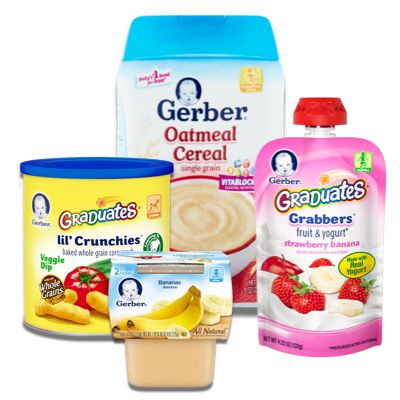 However, the American Academy of Pediatrics advises not to give babies juices until one year unless recommended by a pediatrician (1).
However, the American Academy of Pediatrics advises not to give babies juices until one year unless recommended by a pediatrician (1).
3. How do I keep baby foods safe?
Always feed your baby fresh, home-cooked food. Wash the ingredients properly in clean tap water. If you are preparing baby food in bulk, freeze the food immediately in a tightly sealed container. Label the container with the date of preparation and time. Only take out the required amount of food from the container when feeding a baby (2). Always check the quality of the food before feeding it to a baby.
4. Do doctors recommend solids at four months?
Blanca Garcia, RDN, nutrition specialist at MIDSS, suggests, “The Academy of Pediatrics (AAP) supports parents who want to breastfeed exclusively for about six months after birth. Therefore, not all doctors may recommend that infants start solids at four months. Some evaluate an infant and may determine that they may be ready at four months, but it’s not blanket advice for everyone.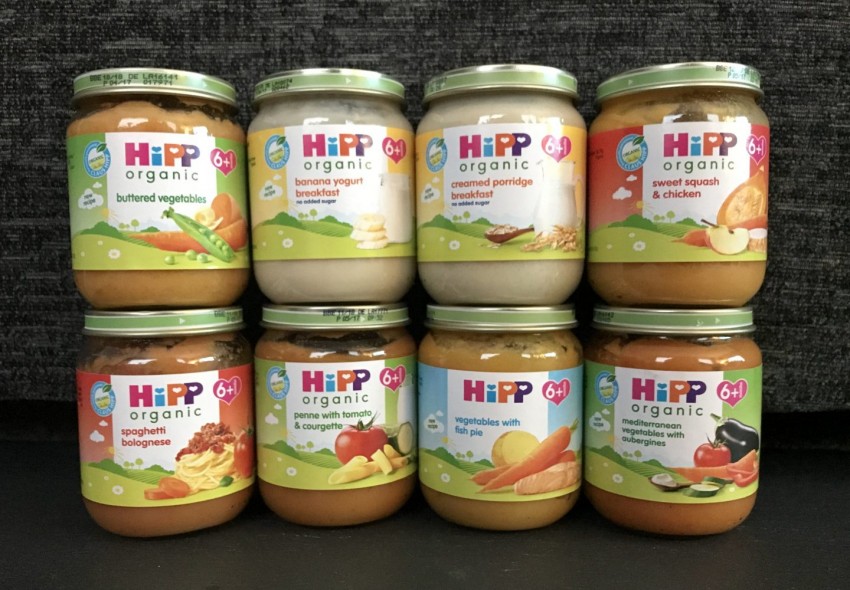 ”
”
If you are looking for food ideas for your 4-month-old baby, begin by offering easily digestible foods such as bananas, sweet potatoes, and cereals. At four months, your tiny tot may be interested in eating foods other than milk. Though most babies are fed various solid foods after six months, you may introduce mashed forms of foods after they cross the four-month mark. Nevertheless, do not rush into introducing foods to your baby. Also, remember that all babies do not react to new foods alike. Hence, if you notice that your baby is not interested in certain foods, give them some time or try feeding other varieties.
Key Pointers
- 4-month-old babies can consume the puree of avocado, banana, and carrots.
- To identify food intolerance issues while introducing solids, serve one food for three to four days instead of feeding mixed foods.
- Avoid adding spices or salt to baby food.
References:
MomJunction's articles are written after analyzing the research works of expert authors and institutions. Our references consist of resources established by authorities in their respective fields. You can learn more about the authenticity of the information we present in our editorial policy.
Our references consist of resources established by authorities in their respective fields. You can learn more about the authenticity of the information we present in our editorial policy.
- Weighing in on fruit juice: AAP now says no juice before 1.
https://publications.aap.org/aapnews/news/14804 - How to make homemade baby food?
https://www.eatright.org/food/planning-and-prep/snack-and-meal-ideas/how-to-make-homemade-baby-food# - Starting Solids
https://www.llli.org/breastfeeding-info/starting-solids/ - Cow’s milk and children
https://medlineplus.gov/ency/article/001973.htm - Salt: the facts
https://www.nhs.uk/live-well/eat-well/food-types/salt-nutrition/#:~:text=Babies%20should%20not%20eat%20much,including%20sodium%2C%20from%20breast%20milk
The following two tabs change content below.
- Reviewer
- Author
- Expert
Eating Shrimp During Pregnancy: Safety, Benefits & Precautions
Eating Shrimp During Pregnancy: Safety, Benefits & Precautions
Chamomile Tea For Babies: Benefits, Dosage And Side Effects
Chamomile Tea For Babies: Benefits, Dosage And Side Effects
11-Month-Old Baby Food Chart And Simple Recipes To Try
11-Month-Old Baby Food Chart And Simple Recipes To Try
Sushi When Pregnant: Safety, Types, Risks And Treatment
Sushi When Pregnant: Safety, Types, Risks And Treatment
Is It Safe To Drink Jasmine Tea While You Are Pregnant?
Is It Safe To Drink Jasmine Tea While You Are Pregnant?
Cabbage For Babies: Health Benefits, Side Effects, and Recipes
Cabbage For Babies: Health Benefits, Side Effects, and Recipes
Are There Any Benefits Of Prebiotics For Babies?
Are There Any Benefits Of Prebiotics For Babies?
Pickles For Babies: Age, Benefits And Concerns
Pickles For Babies: Age, Benefits And Concerns
Is It Safe To Eat Muskmelon In Pregnancy? And How To Eat?
Is It Safe To Eat Muskmelon In Pregnancy? And How To Eat?
Baby formula feeding chart: How much formula by weight and age
Is your baby getting too much or too little formula? It's an important question that worries many new parents, especially those with newborns. When deciding how much formula to give your baby, it's important to watch their hunger cues as well as looking at guidelines based on age and weight. In general, before they're eating solids, babies need 2.5 ounces of formula per pound of body weight each day.
When deciding how much formula to give your baby, it's important to watch their hunger cues as well as looking at guidelines based on age and weight. In general, before they're eating solids, babies need 2.5 ounces of formula per pound of body weight each day.
These guidelines are for babies who are exclusively formula-fed for the first 4 to 6 months, and then fed a combination of formula and solids up to age 1. If your baby is getting a combination of breast milk and formula, talk to their doctor for separate advice.
Your pediatrician can tell you where your baby falls on the growth charts, make sure they're growing steadily on their own growth curve, and help you ensure that they're getting a healthy amount of formula. If you're ever worried about your baby's growth, behavior, or development, talk with their doctor.
How much formula for a newborn
For the first few days, offer your newborn 1 to 2 ounces of formula every 2 or 3 hours. (At first, newborns may only take a half ounce of formula at a time. )
)
After the first few days, give your newborn 2 to 3 ounces of formula every 3 to 4 hours.
Initially it's best to feed your formula-fed newborn on demand, whenever they show signs that they're hungry. Because your little one can't tell you when they want a bottle, you'll need to learn to read their hunger cues. Crying is often a late sign of hunger, so if you can, try to catch the earlier signs that it's time for a feeding.
Here are some hunger cues to watch for:
- Smacking or licking their lips
- Rooting (moving their jaw, mouth, or head in search of food)
- Putting their hands to their mouth
- Opening their mouth
- Fussiness
- Sucking on things
- Becoming more alert
- Crying
As time passes, your newborn will begin to develop a fairly regular feeding schedule. You'll become familiar with their cues and needs, and knowing when and how much to feed them will be much easier.
Formula feeding chart by weight
During the first 4 to 6 months, when your baby isn't eating solid foods, here's a simple rule of thumb: Offer 2.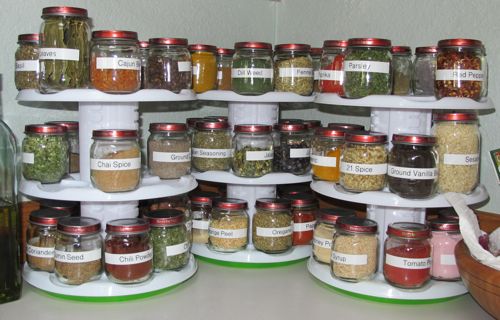 5 ounces of formula per pound of body weight every 24 hours, with a maximum of about 32 ounces.
5 ounces of formula per pound of body weight every 24 hours, with a maximum of about 32 ounces.
Advertisement | page continues below
| Weight | Ounces of formula |
|---|---|
| 6 pounds | 15 fl oz every 24 hours |
| 7 pounds | 17.5 fl oz every 24 hours |
| 8 pounds | 20 fl oz every 24 hours |
| 9 pounds | 22.5 fl oz every 24 hours |
| 10 pounds | 25 fl oz every 24 hours |
| 11 pounds | 27.5 fl oz every 24 hours |
| 12 pounds | 30 fl oz every 24 hours |
These numbers aren't rigid rules. They offer a rough estimate for what your baby may need. Some babies will grow well while taking less than the recommended amount, while others consistently need more. Your baby's daily feedings will also vary according to their individual needs – in other words, they may want a bit more on some days and a bit less on others.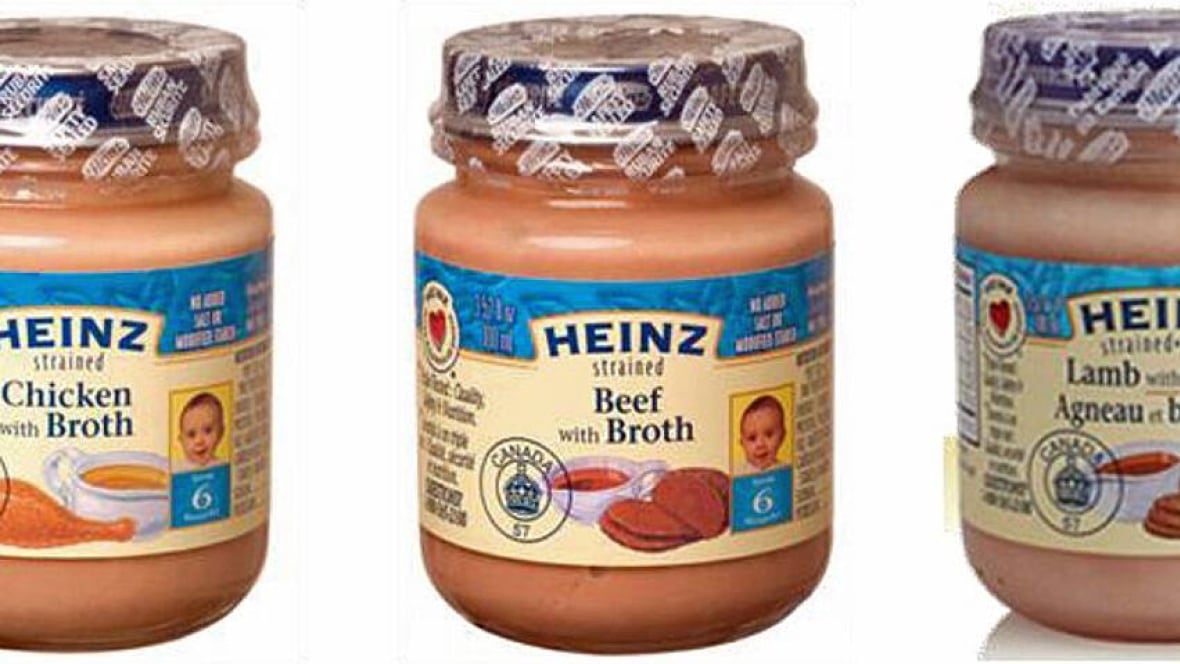
Formula feeding chart by age
Here are typical amounts per day based on age:
| Age | Ounces of formula |
|---|---|
| Full-term newborn | 2 ounces per bottle every 3 to 4 hours |
| 1 month old | 3 to 4 ounces per bottle every 3 to 4 hours |
| 2 month old | 4 to 5 ounces per bottle every 3 to 4 hours |
| 3 month old | 4 to 6 ounces per bottle every 3 to 4 hours |
| 4 month old | 4 to 6 ounces per bottle, 4 to 6 times a day |
| 5 month old | 4 to 6 ounces per bottle, 4 to 6 times a day |
| 6 month old | 6 to 8 ounces per bottle, 4 to 5 times a day |
| 7 month old | 6 to 8 ounces per bottle, 3 to 5 times a day |
From 8 months old until their first birthday, you can expect your baby to have 7 to 8 ounces per bottle, 3 to 4 times a day.
As your baby gets older – and their tummy gets bigger – they'll drink fewer bottles a day with more formula in each.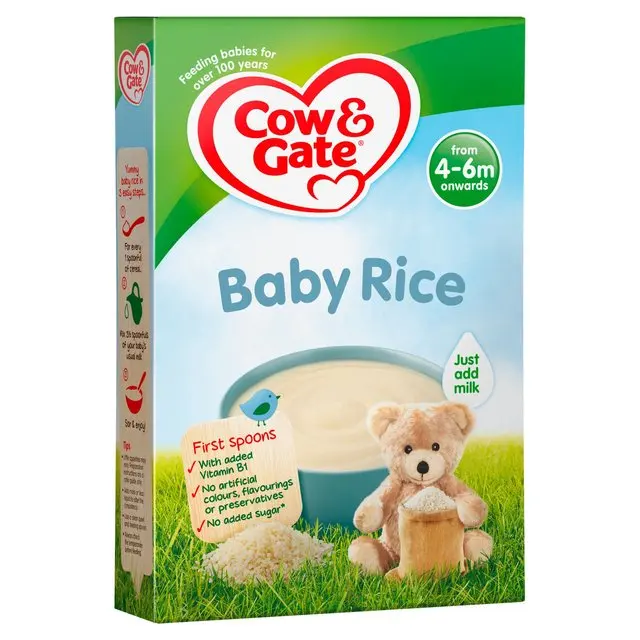 It's important not to overfeed your baby so they'll stay at a healthy weight. Your baby shouldn't have more than 32 ounces of formula in 24 hours.
It's important not to overfeed your baby so they'll stay at a healthy weight. Your baby shouldn't have more than 32 ounces of formula in 24 hours.
When they reach their first birthday, they can stop drinking formula and transition to cow's milk in a bottle, sippy cup, straw cup, or open cup. Limit your toddler to 16 to 24 ounces (2 to 2.5 cups) a day of whole milk, so they have room for other healthy foods.
Here are signs that your baby's getting all the formula they need:
- Steady weight gain. They continue to gain weight after their first 10 days and follow a healthy growth curve during their first year. (Most babies lose up to 7 to 10 percent of their birth weight in the first few days and then regain it by the time they're about 2 weeks old.)
- Happy baby. They seem relaxed and satisfied after a feeding.
- Wet diapers. They wet two to three diapers a day in the first few days after birth. Over the next few days, the amount should increase to at least five to six wet diapers a day.
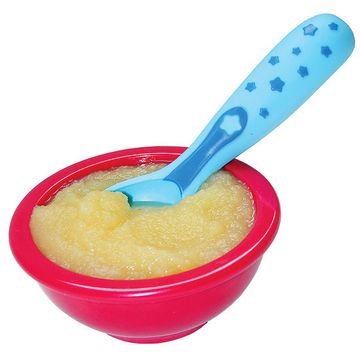
Babies are usually good at eating the amount they need, but bottle-fed babies can drink too much at times. Here are the signs that they're getting too much formula:
- Vomiting after a feeding may be a sign that your baby had too much. (Spitting up is normal, vomiting isn't.)
- Tummy pain after a feeding can also be a sign of overfeeding. If your baby draws up their legs or their tummy seems tense, they may be in pain. (See other possible reasons for stomach pain in babies.)
If your baby seems to want to eat all the time, even after finishing a bottle, talk to your pediatrician. Using a pacifier may help soothe their need to suck.
Formula-feeding tips
- In general, babies eat when they're hungry and stop when they're full, so resist the temptation to encourage your baby to finish each bottle. Overfeeding during infancy can contribute to obesity later in life.
- Don't respond to your baby's every cry with a bottle.
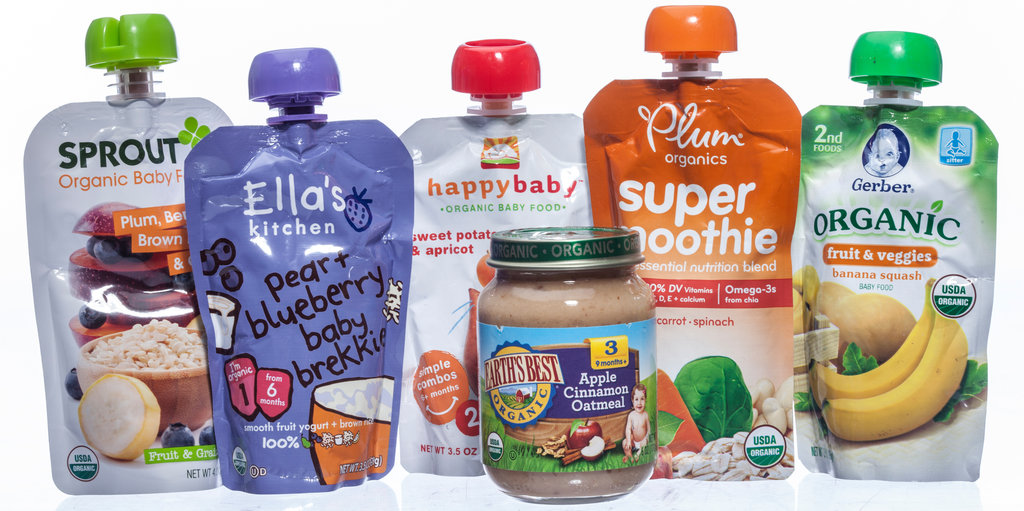 They may be crying because their diaper is wet, they're cold or hot, they need to be burped, or they want to be close to you. (Learn more about why babies cry, and how to soothe them.)
They may be crying because their diaper is wet, they're cold or hot, they need to be burped, or they want to be close to you. (Learn more about why babies cry, and how to soothe them.) - Your baby may be hungrier than usual during growth spurts. These typically occur 10 to 14 days after birth and around 3 weeks, 6 weeks, 3 months, and 6 months of age.
Read more:
- Formula Feeding Problem Solver
- How to safely store and use formula
Was this article helpful?
Yes
No
What foods can be given to a baby at 4 months
Reviewer Kovtun Tatyana Anatolievna
10530 views nine0005
Most often, the need for complementary foods at four months arises according to individual indications.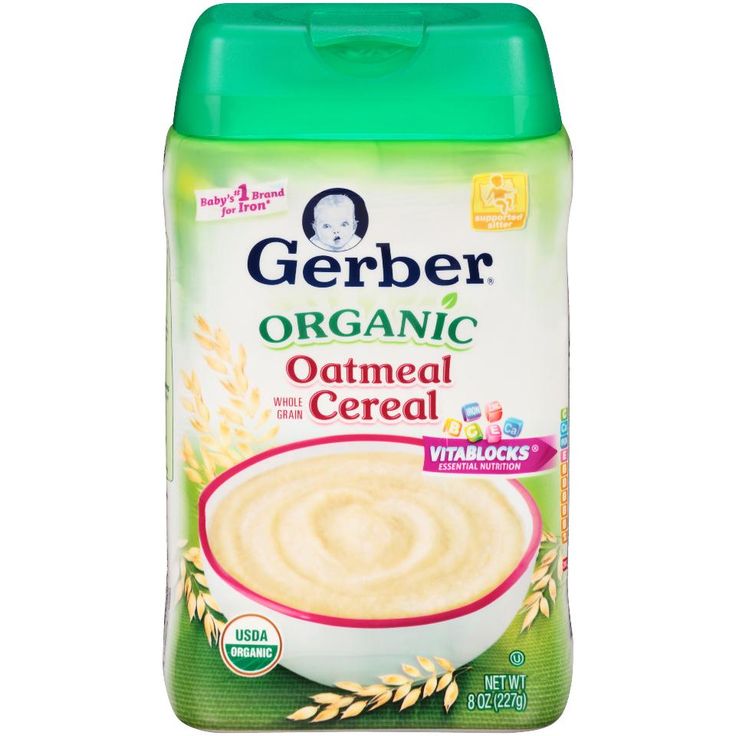 How to properly introduce the baby to adult food and what to offer him?
How to properly introduce the baby to adult food and what to offer him?
Breast milk or infant formula recommended by a specialist remains a key and indispensable product for a baby up to a year of life, and it is better, according to the recommendations of the World Health Organization, to keep it up to two years. But in some cases, a specialist may recommend the first purees at the age of more than four months of age. nine0005
The decision on early complementary feeding should be made by parents together with the specialist who is watching the child. He will tell you what to pay attention to and what products to offer the baby in the first place.
If your baby needs complementary foods at four months, don't worry that it's too early. At this time, the gastrointestinal tract of some children is already becoming quite mature. In a baby, the permeability of the mucous membrane of the small intestine decreases and a number of digestive enzymes mature. The child can already swallow semi-liquid food.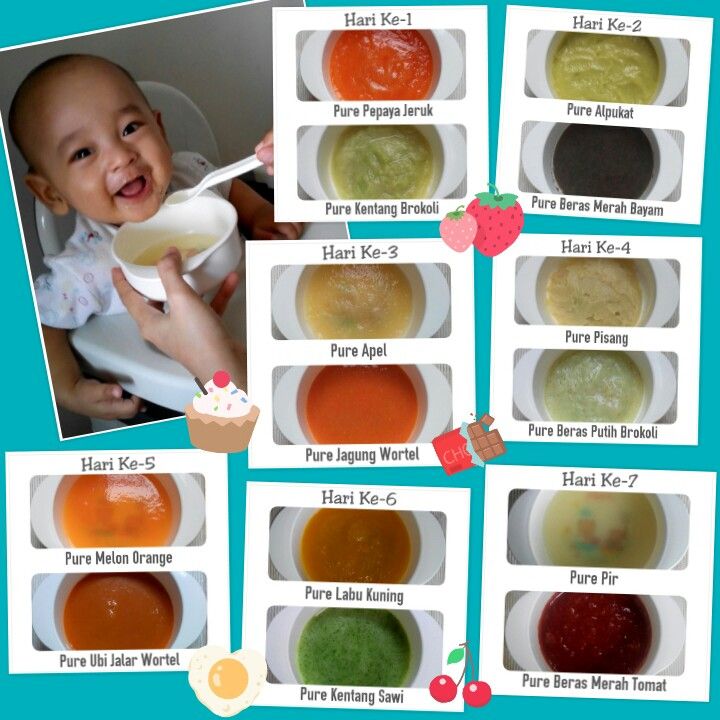 nine0005
nine0005
What can a baby eat at 4 months
For the first feeding of the baby, choose either dairy-free baby porridge or baby vegetable puree.
Then add meat puree (over 6 months old), fruit puree and juices, baby dairy products (over 8 months old), fish puree (over 8 months old), egg yolk, as well as vegetable and butter.
Usually, a specialist, based on the condition of the child, determines in what order to offer products, and builds a nutrition scheme. nine0005
In the fifth month of life, the diet of crumbs may include porridge and vegetable purees. This recommendation does not take into account the individual characteristics of the baby and must be agreed with a specialist. Only he will tell you exactly what you can feed a baby at 4 months.
Complementary feeding rules at four months of age
You need to offer the dish with ½ teaspoon in the morning. So parents can track the reaction of the crumbs to a new product during the day. At the same time, you need to introduce the baby to only one product and gradually increase its volume over several days. As soon as the child tastes it, you can offer something else. nine0013
At the same time, you need to introduce the baby to only one product and gradually increase its volume over several days. As soon as the child tastes it, you can offer something else. nine0013
Simultaneously with the introduction of complementary foods, you need to acquaint the baby with the basic rules of etiquette. Meals should be arranged only at the table in a special chair, so that the child immediately gets used to the rules in the house.
Sample menu for a 4 month old baby
When the baby gets acquainted with the basic products for the first feeding, you can build the first menu. In the morning after the main feeding, he can be offered a new product. The diet of a 4-month-old baby should be agreed with a specialist. nine0005
Buy ready-made puree or make your own
Many parents enjoy cooking for their children, and some prefer ready-made mashed potatoes. In the first case, you need to spend more time: for example, select vegetables, wash them and steam them. In addition to this, it should be remembered that cooking at home is not safe, since it is rarely possible to check the raw materials for the content of nitrates, toxins and other hazardous substances at home.
In addition to this, it should be remembered that cooking at home is not safe, since it is rarely possible to check the raw materials for the content of nitrates, toxins and other hazardous substances at home.
In addition, at home it is difficult to follow the technological process of preparation and track the optimal degree of grinding of the product. Therefore, experts recommend the use of industrial products in the nutrition of young children. nine0005
This option is optimal for those who are afraid of making mistakes at the stages of choosing ingredients or cooking. Puree "FrutoNyanya" undergoes strict control of the recipe and the preparation process, which makes it possible to exclude the ingress of any pathogenic bacteria into the product.
You can not refuse breast or artificial feeding if the baby has already begun to get acquainted with adult products. This will help him develop organically and gain weight well. nine0005
Reviewer Kovtun Tatyana Anatolievna
Scientific adviser of PROGRESS JSC, candidate of medical sciences
All expert articles
Diet for a child aged 4-6 months
Your baby is already 4 months old. He has noticeably grown up, become more active, is interested in objects that fall into his field of vision, carefully examines and reaches for them. The emotional reactions of the child have become much richer: he joyfully smiles at all the people whom he often sees more and more often, makes various sounds. nine0005
He has noticeably grown up, become more active, is interested in objects that fall into his field of vision, carefully examines and reaches for them. The emotional reactions of the child have become much richer: he joyfully smiles at all the people whom he often sees more and more often, makes various sounds. nine0005
You are still breastfeeding or have had to switch to formula or formula feeding. The child is actively growing, and only with breast milk or infant formula, he can no longer always get all the necessary nutrients. And that means it's time to think about complementary foods.
The optimal time to start its introduction is between 4 and 6 months, regardless of whether the baby is receiving breast milk or formula. This is the time when children respond best to new foods. Up to 4 months, the child is not yet ready to perceive and digest any other food. And with the late introduction of complementary foods - after 6 months, children already have significant deficiencies of individual nutrients and, first of all, micronutrients (minerals, vitamins, long-chain polyunsaturated fatty acids, etc.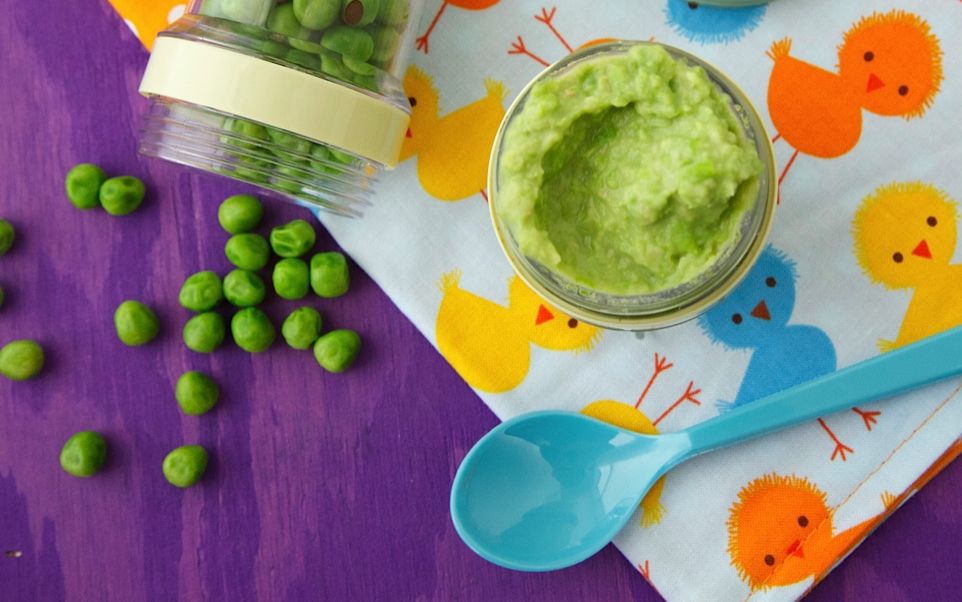 ). In addition, toddlers at this age often refuse new foods, they have delayed development of chewing skills for thick foods, and inadequate eating habits are formed. It is important to know that, no matter how strange it may seem at first glance, with a delayed appointment of complementary foods, allergic reactions more often occur on them. nine0005
). In addition, toddlers at this age often refuse new foods, they have delayed development of chewing skills for thick foods, and inadequate eating habits are formed. It is important to know that, no matter how strange it may seem at first glance, with a delayed appointment of complementary foods, allergic reactions more often occur on them. nine0005
When is it advisable to introduce complementary foods as early as 4 months, and when can you wait until 5.5 or even 6 months? To resolve this issue, be sure to consult a pediatrician.
As a rule, at an earlier age (4 - 4.5 months), complementary foods are introduced to children at risk of developing iron deficiency anemia, as well as children with insufficient weight gain and with functional digestive disorders.
The optimal time to start introducing complementary foods to a healthy baby is between 5 and 5.5 months of age. nine0005
The World Health Organization recommends that breastfed babies should be introduced to complementary foods from 6 months of age. From the point of view of domestic pediatricians, which is based on extensive practical experience and scientific research, this is possible only in cases where the child was born on time, without malnutrition (since in these cases the mineral reserves are very small), he is healthy, grows well and develops. In addition, the mother should also be healthy, eat well and use either specialized enriched foods for pregnant and lactating women, or vitamin and mineral complexes in courses. Such restrictions are associated with the depletion of iron stores even in a completely healthy child by 5-5.5 months of age and a significant increase in the risk of anemia in the absence of complementary foods rich or fortified with iron. There are other deficits as well. nine0005
From the point of view of domestic pediatricians, which is based on extensive practical experience and scientific research, this is possible only in cases where the child was born on time, without malnutrition (since in these cases the mineral reserves are very small), he is healthy, grows well and develops. In addition, the mother should also be healthy, eat well and use either specialized enriched foods for pregnant and lactating women, or vitamin and mineral complexes in courses. Such restrictions are associated with the depletion of iron stores even in a completely healthy child by 5-5.5 months of age and a significant increase in the risk of anemia in the absence of complementary foods rich or fortified with iron. There are other deficits as well. nine0005
The first complementary food can be vegetable puree or porridge, fruit puree is better to give the baby later - after tasty sweet fruits, children usually eat vegetable puree and cereals worse, often refuse them altogether.
Where is the best place to start? In cases where the child has a tendency to constipation or he puts on weight too quickly, preference should be given to vegetables. With a high probability of developing anemia, unstable stools and small weight gain - from baby cereals enriched with micronutrients. And if you started the introduction of complementary foods with cereals, then the second product will be vegetables and vice versa. nine0005
With a high probability of developing anemia, unstable stools and small weight gain - from baby cereals enriched with micronutrients. And if you started the introduction of complementary foods with cereals, then the second product will be vegetables and vice versa. nine0005
If the first complementary foods are introduced at 6 months, it must be baby porridge enriched with iron and other minerals and vitamins, the intake of which with breast milk is no longer enough.
Another important complementary food product is mashed meat. It contains iron, which is easily absorbed. And adding meat to vegetables improves the absorption of iron from them. It is advisable to introduce meat puree to a child at the age of 6 months. Only the daily use of children's enriched porridge and meat puree can satisfy the needs of babies in iron, zinc and other micronutrients. nine0005
But it is better to introduce juices later, when the child already receives the main complementary foods - vegetables, cereals, meat and fruits.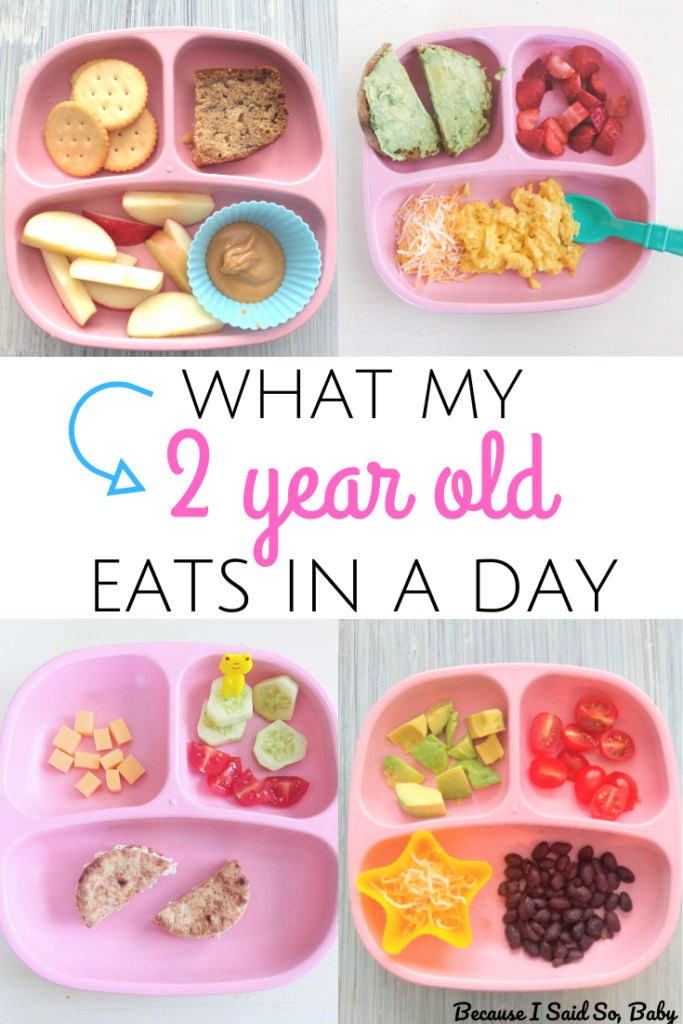 After all, complementary foods are needed so that the baby receives all the substances necessary for growth and development, and there are very few in their juices, including vitamins and minerals.
After all, complementary foods are needed so that the baby receives all the substances necessary for growth and development, and there are very few in their juices, including vitamins and minerals.
Juices should not be given between feedings, but after the child has eaten porridge or vegetables with meat puree, as well as for an afternoon snack. The habit of drinking juice between meals leads to frequent snacking in the future, a love of sweets is instilled, children have more tooth decay and an increased risk of obesity. nine0005
With the start of the introduction of complementary foods, the child is gradually transferred to a 5-time feeding regimen.
Rules for the introduction of complementary foods:
- preference should be given to baby products of industrial production, they are made from environmentally friendly raw materials, have a guaranteed composition and degree of grinding
- Complementary foods should be offered to the baby by spoon at the start of feeding, before breastfeeding (formula feeding)
- the volume of the product increases gradually, starting with ½ - 1 spoon, and in 7 - 10 days we bring it to the age norm, subsequent products within the same group (cereals from other cereals or new vegetables)
- can be entered faster, in 5 - 7 days
- start introduction with monocomponent products
- it is undesirable to give a new product in the afternoon, it is important to follow how the child reacts to it
- new products are not introduced in the event of acute illness, and before and immediately after prophylactic vaccination (should be abstained for several days)
When introducing a new type of complementary food, first try one product, gradually increasing its amount, and then gradually "dilute" this product with a new one.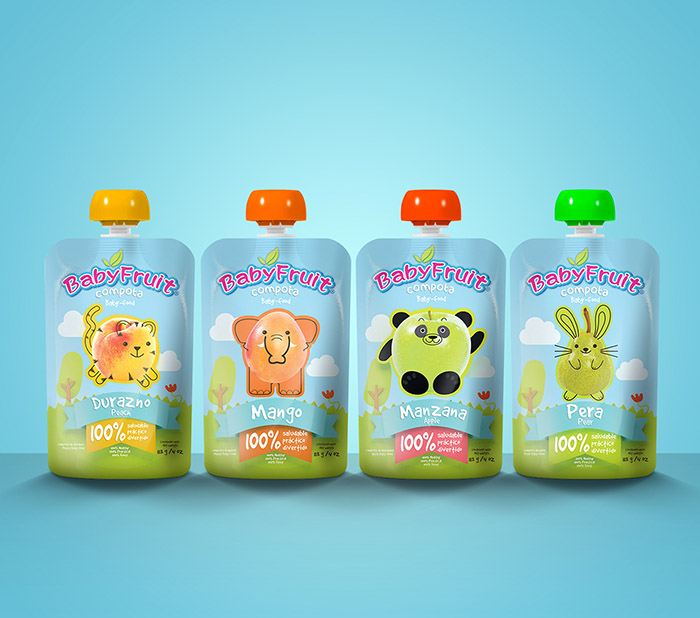 For example, vegetable complementary foods can be started with a teaspoon of zucchini puree. During the week, give the baby only this product, gradually increasing its volume. After a week, add a teaspoon of mashed broccoli or cauliflower to the zucchini puree and continue to increase the total volume every day. Vegetable puree from three types of vegetables will be optimal. The portion should correspond to the age norm. Over time, you can replace the introduced vegetables with others faster. nine0005
For example, vegetable complementary foods can be started with a teaspoon of zucchini puree. During the week, give the baby only this product, gradually increasing its volume. After a week, add a teaspoon of mashed broccoli or cauliflower to the zucchini puree and continue to increase the total volume every day. Vegetable puree from three types of vegetables will be optimal. The portion should correspond to the age norm. Over time, you can replace the introduced vegetables with others faster. nine0005
After the introduction of one vegetable (bringing its volume to the required amount), you can proceed to the intake of porridge, and diversify the vegetable diet later.
If the child did not like the dish, for example, broccoli, do not give up on your plan and continue to offer this vegetable in a small amount - 1-2 spoons daily, you can not even once, but 2-3 times before meals, and after 7 - 10, and sometimes 15 days, the baby will get used to the new taste. This diversifies the diet, will help to form the right taste habits in the baby. nine0005
nine0005
Spoon-feeding should be done with patience and care. Forced feeding is unacceptable!
In the diet of healthy children, porridge, as a rule, is introduced after vegetables (with the exception of healthy children who are breastfed, when complementary foods are introduced from 6 months). It is better to start with dairy-free gluten-free cereals - buckwheat, corn, rice. At the same time, it is important to use porridge for baby food of industrial production, which contains a complex of vitamins and minerals. In addition, it is already ready for use, you just need to dilute it with breast milk or the mixture that the baby receives. nine0005
Children suffering from food allergies are introduced complementary foods at 5-5.5 months. The rules for the introduction of products are the same as for healthy children, in all cases it is introduced slowly and begins with hypoallergenic products. Be sure to take into account individual tolerance. The difference is only in the correction of the diet, taking into account the identified allergens.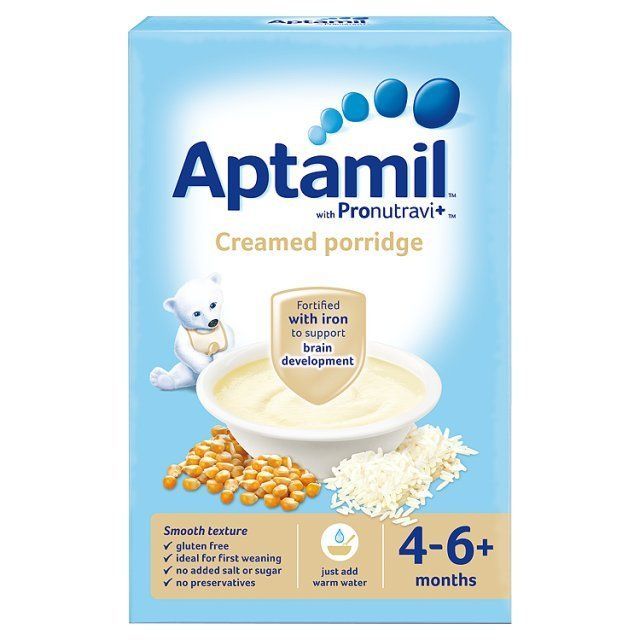 From meat products, preference should first be given to mashed turkey and rabbit.
From meat products, preference should first be given to mashed turkey and rabbit.
Diets for different age periods
Explain how you can make a diet, it is better to use a few examples that will help you navigate in compiling a menu specifically for your child.
From 5 months, the volume of one feeding is on average 200 ml.
Option 1.
If your baby started receiving complementary foods from 4-5 months, then at 6 months his diet should look like this:
| Breast milk or VHI* | 200 ml | |
| II feeding 10 hours | Dairy-free porridge** Supplementation with breast milk or VHI* | 150 g 50 ml |
| III feeding 14 hours | Vegetable puree Meat puree Vegetable oil Supplemental breast milk or VHI* | 150 g 5 - 30 g 1 tsp 30 ml |
| IV feeding 18 hours | Fruit puree Breast milk or VHI* | 60 g 140 ml |
| V feeding 22 hours | Breast milk or VHI* | 200 ml |
* - infant formula
** - diluted with breast milk or VHI
Option 2.
* - infant formula Option 3. : ** - diluted with breast milk Up to 7 months, increase the volume of porridge and vegetable puree to 150 g and introduce fruit puree. I feeding
6 hours Breast milk or VHI* 200 ml II feeding
10 hours Dairy-free porridge**
Fruit puree 150 g
20 g III feeding
14 hours Vegetable puree
Meat puree Vegetable oil
Fruit juice 150 g
5 - 30 g
1 tsp
60 ml IV feeding
18 hours Fruit puree
Breast milk or VHI* 40 g
140 ml V feeding
22 hours Breast milk or VHI* 200 ml
** - diluted with breast milk or VHI 
I feeding
6 hours Breast milk II feeding
10 hours Dairy-free porridge**
Breast milk supplement 100 g III feeding
14 hours Vegetable puree
Meat puree Vegetable oil
Breast milk supplement 100 g
5 - 30 g
1 tsp IV feeding
18 hours Breast milk V feeding
22 hours Breast milk 

